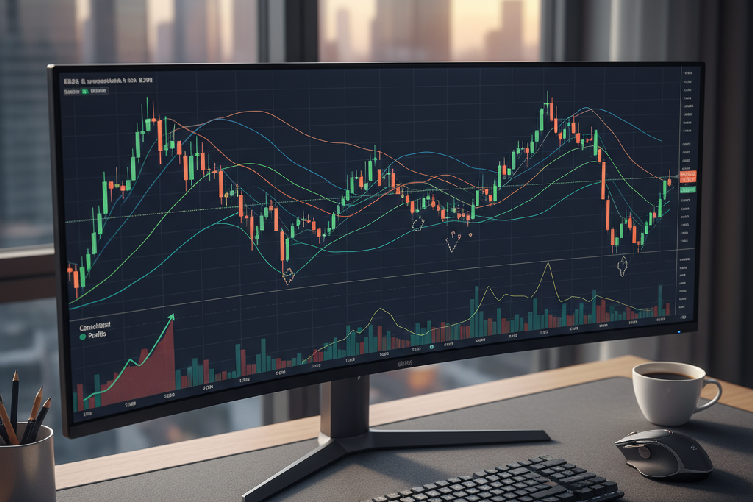Mastering the Trend Reversal Trading Strategy

The trend reversal trading strategy is a powerful technique for identifying and profiting from major shifts in the market. Simply put, it involves spotting the exact moment a trend is losing steam and about to reverse. This allows you to capitalize on the new price movement in the opposite direction.
Mastering this strategy is crucial for maximizing your profits, particularly in volatile markets like forex, stocks, and cryptocurrencies. By getting in at the very beginning of a new trend, you stand to make significantly larger gains compared to other methods.
Unlike trend-following, which focuses on riding an existing wave, trend reversal trading is all about catching the next big move before it happens. With the right tools and a disciplined approach, you can enhance your trading results, whether you’re working with a regulated forex broker or in other financial arenas.
What Is a Trend Reversal?
A trend reversal is when an asset’s price direction fundamentally changes. If it was in an uptrend (bullish), it starts a new downtrend (bearish), and vice versa. The ability to spot these turning points is what separates proactive traders from reactive ones.
Trend-Following vs. Trend Reversal Trading
It’s important to understand the difference between these two core approaches:
- Trend-Following: This involves trading in the same direction as the current market trend. You buy during uptrends and sell during downtrends.
- Trend Reversal: This strategy aims to predict when the current trend will end. You enter or exit trades early to take full advantage of the new, emerging trend.
- Doji: This pattern signifies indecision in the market, which often appears just before a trend changes direction.
- Pin Bar: A Pin Bar shows a strong price rejection at a certain level, indicating that the market is likely to move in the opposite direction.
Experienced traders often focus on catching reversals because these moments signal major market shifts and can unlock significant profit opportunities.
Key Indicators for Spotting Reversals
Identifying a trend reversal isn’t just guesswork; it relies heavily on technical analysis. Certain indicators are designed to provide clues about fading momentum and potential turning points. Combining them gives you a more reliable signal.

1. RSI (Relative Strength Index)
The RSI is a momentum indicator that measures the speed and change of price movements on a scale of 0 to 100. It helps identify overbought (above 70) and oversold (below 30) conditions. When the price hits these extremes, it suggests the current trend may be exhausted and a reversal is possible.
2. Moving Averages and Crossovers
Moving averages (MAs) smooth out price action to show the underlying trend direction. A crossover occurs when a short-term MA crosses a long-term MA. For example, if the 50-day MA crosses below the 200-day MA, it can signal a shift from a bullish to a bearish trend.
3. Support and Resistance Levels
These are crucial price levels where the market has historically struggled to move past. A break below a key support level can signal the end of an uptrend, while a break above a resistance level can mark the end of a downtrend. Traders watch these zones closely for reversal clues.
4. Candlestick Patterns
Specific candlestick formations are powerful visual cues of a potential reversal. The most common patterns include:
5. Fibonacci Retracements and Bollinger Bands
Fibonacci retracement levels (like 38.2%, 50%, and 61.8%) can predict areas where a price pullback might end and the trend could reverse. Bollinger Bands, on the other hand, measure volatility. When the price moves far outside the bands, it indicates an overextended trend that is ripe for a reversal.
Effective Trend Reversal Strategies: Mastering Your Timing
To successfully use a trend reversal strategy, you must combine your understanding of market signals with a disciplined execution plan. Let’s explore one of the most effective strategies you can use.
The Pin Bar Reversal Strategy
The Pin Bar strategy is a popular and visually straightforward method for spotting reversals. A Pin Bar is a candlestick with a small body and a long wick (or shadow) on one side. This pattern powerfully indicates that the market tested a price level but sharply rejected it.
This rejection is a strong signal that the price is likely to move in the opposite direction of the long wick. For example, if a Pin Bar with a long lower wick forms at a key support level, it suggests that buyers have stepped in forcefully, signaling a potential bullish reversal. Conversely, a Pin Bar with a long upper wick at a resistance level suggests selling pressure is taking over, hinting at a bearish reversal.
By combining these technical tools and strategies with patience and discipline, you can significantly improve your ability to identify and profit from trend reversals. This skill is a valuable addition to any trader’s toolkit, providing a clear edge in navigating the markets.

